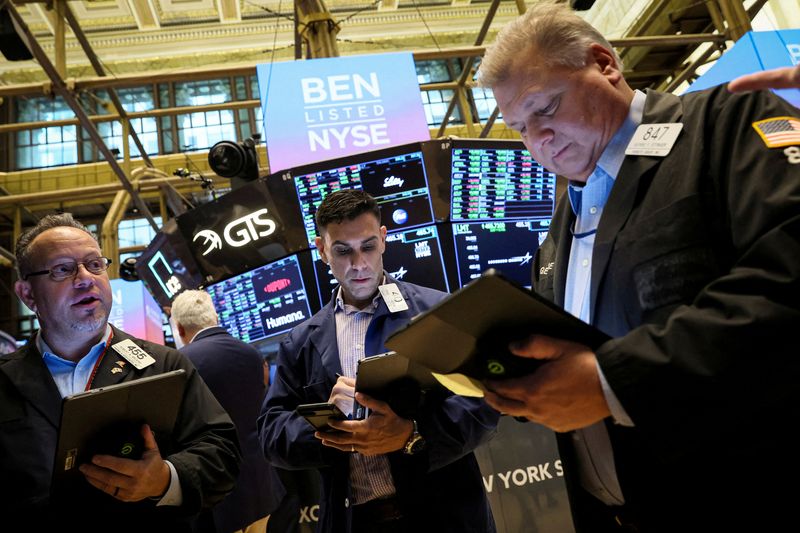A look at the day ahead in U.S. and global markets from Mike Dolan
Flagging world markets got a lift on Tuesday as China moved to shore up the falling yuan from the year's lows and nodded to more government stimulus to underpin its spluttering economic recovery instead.
With falling Chinese interest rates diverging markedly from ongoing U.S. Federal Reserve tightening, Beijing is struggling to support the economy with monetary policy alone as that's undermining the currency. It made its displeasure at further yuan weakness clear on Tuesday, lifting official daily targets while state banks sold dollars.
Then, indicating Chinese growth had accelerated in the second quarter to a 5% target, Premier Li Qiang told the World Economic Forum in Tianjin that the government would take steps to boost demand, invigorate markets, accelerate green transition and open high levels of its economy to the outside world.
The combined moves boosted Shanghai and Hong Kong's main stock indices by more than 1% each and rippled across world oil and commodity markets.
Despite the yuan rebound, however, the dollar rose against the euro and yen. A former Bank of Japan official indicated any change to the BoJ's super-easy policy stance may have to wait until October.
Even though investors seemed to bat away the bizarre weekend events in Russia, the murky Western interest rate picture continues to hamper European and U.S. stocks.
Central bankers meeting at an annual European Central Bank forum in Portugal dissuaded markets from betting on a peak in the interest rate cycle just yet.
"It is unlikely that in the near future the central bank will be able to state with full confidence that the peak rates have been reached," ECB chief Christine Lagarde said, adding inflation was in a new phase that could linger for some time.
Lagarde echoed International Monetary Fund second-in-command Gita Gopinath, who at the same event late Monday spotlighted "uncomfortable truths" about inflation that meant central banks needed to work harder to get price rises back to target - even at an obvious cost to growth.
While those comments are likely more directed at European policymakers, where disinflation is lagging, markets also still expect the Fed to push ahead with at least one more interest rate rise next month.
Morgan Stanley (NYSE:MS) economists on Tuesday said they now expect a July Fed hike to a mid-point of 5.375%, where they would stay until at least year-end, with further moves after July "data dependent".
The hawkish rate picture didn't deter demand for two-year Treasury notes at Monday's auction, however, and 2-year yields slipped below 4.70% on Tuesday. Five-year paper is up for grabs later.
The main focus of the U.S. data slate is the release of the Conference Board's June consumer confidence survey, with eyes on whether it matches the University of Michigan's picture of ebbing inflation expectations and rising sentiment this month.
Wall St futures were mildly positive ahead of the open. The VIX volatility index hovered just above 14, well off Monday's highs.
Events to watch for later on Tuesday:
* U.S. June consumer confidence, U.S. May new home sales, April home prices, May durable goods orders, Dallas Federal Reserve June service sector survey, Richmond Fed June manufacturing
* European Central Bank conference in Sintra, Portugal

* U.S. Treasury auctions 5-year notes
* U.S. corporate earnings: Walgreens Boots Alliance (NASDAQ:WBA)
(By Mike Dolan, editing by Emelia Sithole-Matarise; mike.dolan@thomsonreuters.com. Twitter: @reutersMikeD)